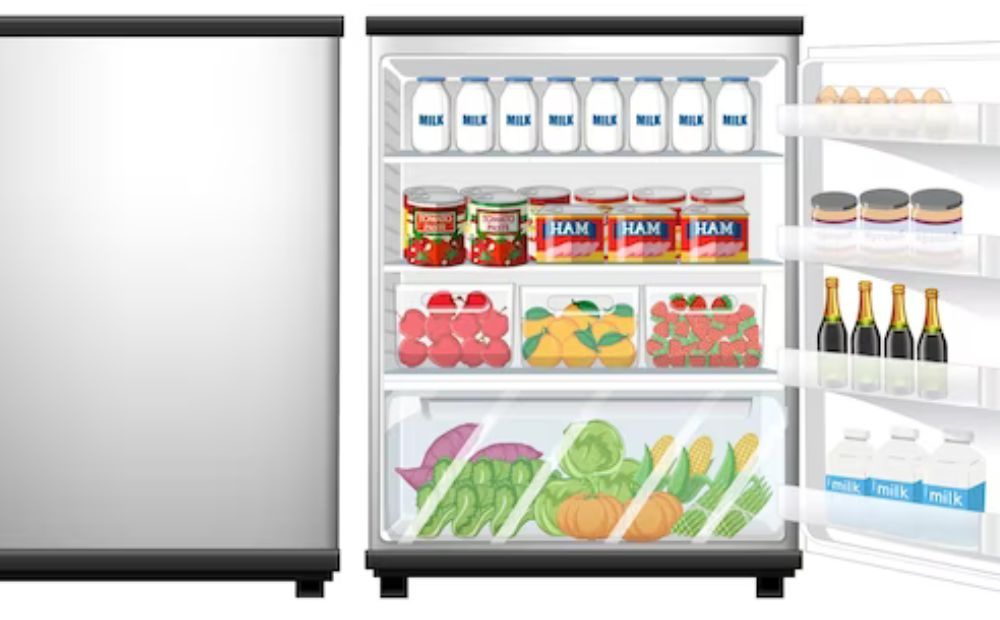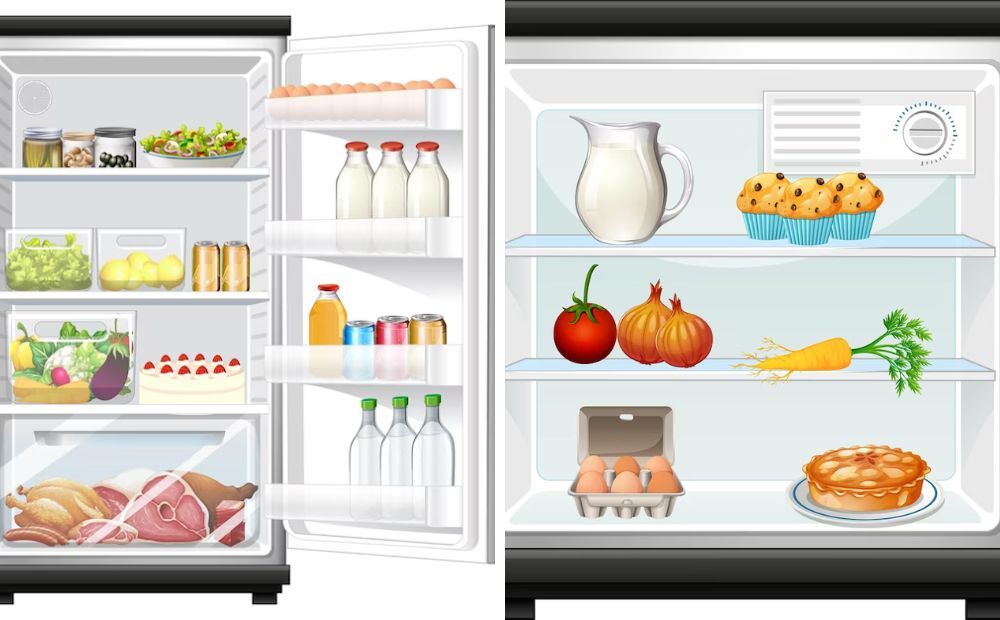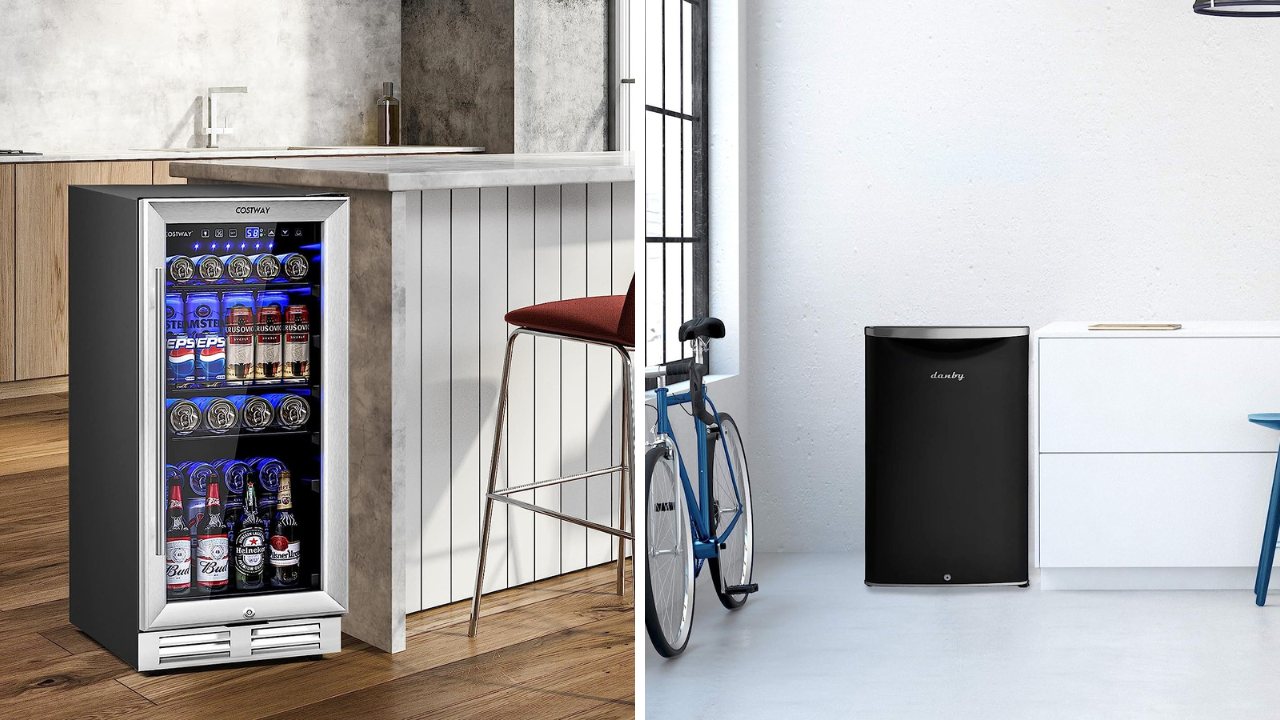In the world of compact appliances, the mini fridge stands out as a versatile and convenient device. Whether it's in a dorm room, a small office, or even a camper van, a mini fridge provides the essential service of keeping our food and beverages cool.
However, to get the most out of these handy appliances, understanding the importance of temperature control in mini fridges is crucial.
- The temperature control in a compact refrigerator is crucial for its efficiency and longevity. It maintains the right temperature for food freshness and drink coolness, and also influences the appliance's energy consumption.
- Understanding how to set up a mini fridge properly is equally important. A well-set mini fridge can provide optimal cooling performance, maintain food safety, and even extend the life of the appliance. In this guide to setting up a mini fridge, you can find a comprehensive guide on how to get your compact refrigerator up and running efficiently.
Short Summary
- The article explains mini fridge operation, temperature control, and ideal settings for various items.
- It provides setup tips for optimal temperature control, including location, dial setting, item arrangement, and maintenance.
- It addresses common temperature control issues and offers solutions for each.
- It answers common questions about mini fridge temperature control, concluding with the importance of understanding and optimizing this feature.

Store Food and drinks in a Compact Fridge
How Does a Mini Fridge Work?
A mini fridge, like any other refrigerator, operates on a simple principle of thermodynamics. It removes heat from the inside and releases it outside, thus creating a cool environment within the fridge.
But how exactly does this happen? Let's break it down.
- The heart of a mini fridge is its compressor, a small but powerful device that compresses the refrigerant gas, causing it to become hot. This hot gas then travels through the coils on the back or bottom of the fridge, releasing its heat to the outside environment. As it cools, the refrigerant turns back into a liquid.
- This liquid refrigerant then passes through an expansion valve, where it rapidly expands and becomes cold. It then flows through the evaporator coils inside the fridge, absorbing heat from the interior and cooling it down. The refrigerant, now warmed and turned back into a gas, returns to the compressor, and the cycle begins again.
- The temperature control plays a crucial role in this process. It regulates the amount of time the compressor operates, thus controlling the temperature inside the fridge. When the temperature inside the fridge rises above a set point, the temperature control switches on the compressor. When the desired temperature is reached, it switches the compressor off.
Understanding this basic working principle of a mini fridge can help you make the most of your appliance. It can guide you in setting the right temperature, arranging your food and beverages for optimal cooling, and troubleshooting any issues that may arise.
For a more visual explanation of how a refrigerator works, check out this resource on How Does a Refrigerator Work?
Understanding the Temperature Dial
The temperature dial in a mini fridge is a crucial component that allows you to control the cooling intensity of your appliance. It's typically a numbered dial, knob, or digital control panel that you can adjust to set the desired temperature.
Most mini fridges come with a temperature dial that ranges from 1 to 7. It's important to note that these numbers don't correspond to specific temperatures but rather to cooling levels. In general, 1 is the least cool setting, and 7 is the coldest.
Setting the dial to 1 will make the compressor run less frequently, resulting in a warmer temperature inside the fridge. Conversely, setting the dial to 7 will make the compressor run more often, creating a colder environment.
It's also worth noting that the temperature inside your mini fridge can be affected by several factors, including the ambient temperature, how often the fridge door is opened, and the amount of food stored inside.

Food and Drinks in a Mini Fridge
Ideal Temperature Settings for a Mini Fridge
The ideal temperature setting for your mini fridge largely depends on what you're storing inside. Here are some general guidelines:
- For beverages: If you're using your mini fridge primarily to cool drinks, a mid-range setting between 3 and 5 usually works well. This provides a nice, refreshing temperature without freezing the beverages.
- For food: If you're storing perishable food items, it's recommended to set the dial towards the colder end, usually around 5 to 7. This helps to preserve the food and prevent bacterial growth.
- For mixed use: If you're storing a combination of food and beverages, a setting around 4 to 5 is typically a good compromise.
Remember, these are just guidelines, and the ideal setting can vary based on your specific needs and the particular model of your mini fridge. It's always a good idea to check the user manual for any specific recommendations from the manufacturer.
How to Set Up Your Mini Fridge for Optimal Temperature Control
Setting up your mini fridge for optimal temperature control involves more than just plugging it in and adjusting the temperature dial. Here's a step-by-step guide to help you get the best performance from your mini fridge:
- Choose the Right Location: Place your mini fridge in a well-ventilated area away from direct sunlight or heat sources. This helps the fridge maintain a consistent temperature and operate more efficiently.
- Set the Temperature Dial: Start with a mid-range setting on the temperature dial, usually around 4 or 5. Allow the fridge to run for a few hours, then check the temperature. Adjust the dial as needed based on what you're storing in the fridge.
- Freezer Compartment: the freezer compartment should be at 0 degrees to keep things frozen safely
- Arrange Your Items Properly: Don't overcrowd your mini fridge. Leave some space between items to allow for proper air circulation. Keep items that need to be colder (like perishable food) towards the back, and items that can tolerate a bit more warmth (like beverages) towards the front.
- Regularly Defrost Your Mini Fridge: If your mini fridge isn't frost-free, regular defrosting is necessary to keep it running efficiently. Excess frost can interfere with the temperature control.
- Clean Your Mini Fridge: Regular cleaning not only keeps your mini fridge smelling fresh but also improves its efficiency. Wipe down the interior with a mild cleaner every few weeks, and clean the exterior and the door seal as well.
- Check the Door Seal: Make sure the door seal is clean and in good condition. A faulty seal can let cold air escape, causing your mini fridge to work harder to maintain the temperature.
By following these steps, you can ensure that your mini fridge operates at its best, providing you with consistently cold beverages and safely stored food.

Cleaning a Compact Fridge
Common Issues with Mini Fridge Temperature Control and How to Fix Them
Even with proper setup and maintenance, you might encounter some issues with your mini fridge's temperature control. Here are some common problems and their solutions:
- Mini Fridge is Too Cold or Freezing Food: If your mini fridge is too cold or freezing your food, it could be due to the temperature dial being set too high. Try adjusting the dial to a lower setting. If this doesn't solve the problem, the thermostat might be faulty and need replacing.
- Mini Fridge is Not Cold Enough: If your mini fridge isn't cooling properly, check the temperature dial to ensure it's set to an appropriate level. Also, make sure the fridge is not overcrowded and that there's enough space for air to circulate. If these steps don't help, there might be an issue with the compressor or the refrigerant level, which would require professional repair.
- Temperature Fluctuates Frequently: Frequent temperature fluctuations can be caused by several factors, including frequent opening of the fridge door, placing hot food inside the fridge, or poor ventilation around the fridge. Try to minimize door opening, let food cool down before placing it in the fridge, and ensure there's enough space around the fridge for heat to dissipate.
- Frost Build-up: If there's excessive frost build-up in your mini fridge, it could interfere with temperature control. Regular defrosting can help prevent this issue. If your fridge is frost-free and still has this problem, there might be an issue with the defrosting system that needs professional attention.
By understanding these common issues and knowing how to troubleshoot them, you can ensure your mini fridge maintains the optimal temperature for your food and beverages.
FAQs on Mini Fridge Temperature Control
Over the course of using a mini fridge, several questions might arise regarding its temperature control. Here are answers to some of the most common queries:
Is 1 or 7 cold on a mini-fridge?
In most mini fridges, 1 is the least cool setting, and 7 is the coldest. So, if you want your fridge to be colder, you should set the dial towards 7.
How do I adjust the temperature on my mini-fridge?
The temperature on a mini fridge can be adjusted using the temperature dial or control panel. Simply turn the dial or adjust the settings on the control panel to your desired level. Remember, it might take a few hours for the temperature change to take effect.
Why is my mini fridge not getting cold?
If your mini fridge is not getting cold, it could be due to several reasons, including a high temperature setting, an overcrowded fridge, a faulty door seal, or a problem with the compressor. Check each of these aspects and make the necessary adjustments or repairs.
Can I use my mini fridge immediately after buying it?
It's recommended to let your mini fridge stand for a few hours after buying it before turning it on. This allows the refrigerant to settle, especially if the fridge was transported on its side.
Refrigerator temperature knob setting - Peppermint
Need a new mini fridge to help you keep your food and drinks at the right temperature? Check out our choices for the best mini fridge with a lock and the best mini fridge for the bedroom.


Understanding and optimizing mini fridge temperature control is crucial for maintaining the efficiency and longevity of your appliance. It ensures your food and beverages are stored at the right temperature, and your mini fridge operates at its best.
We hope this guide has provided you with valuable insights into the workings of a mini fridge and how to manage its temperature control. We encourage you to apply these tips and tricks to get the most out of your mini fridge.
Happy cooling!










